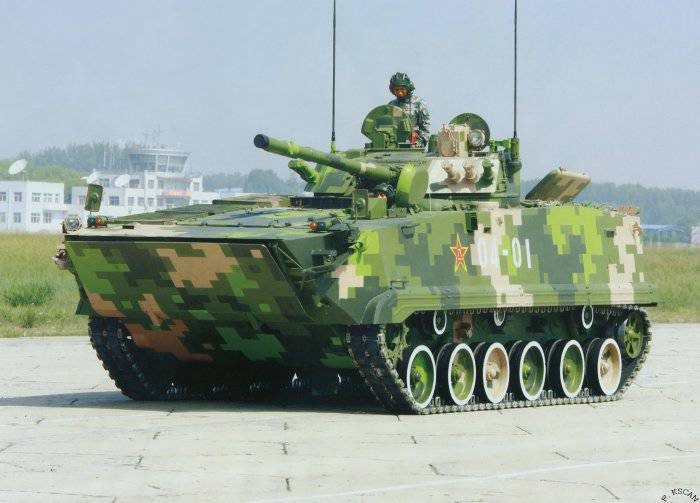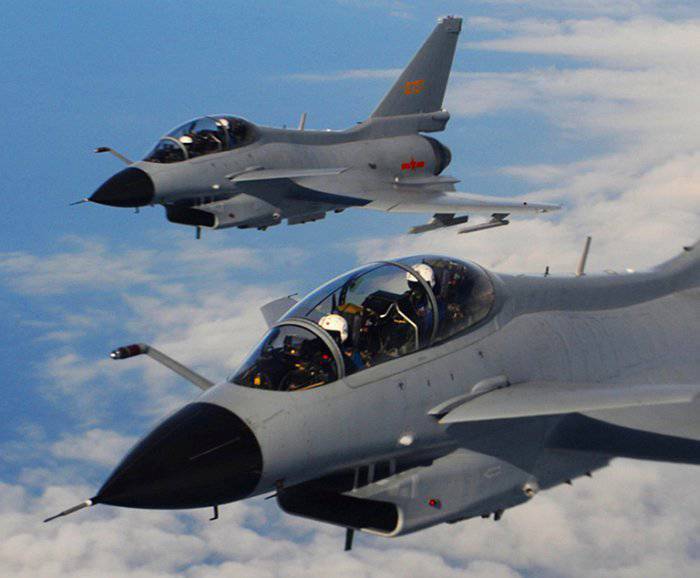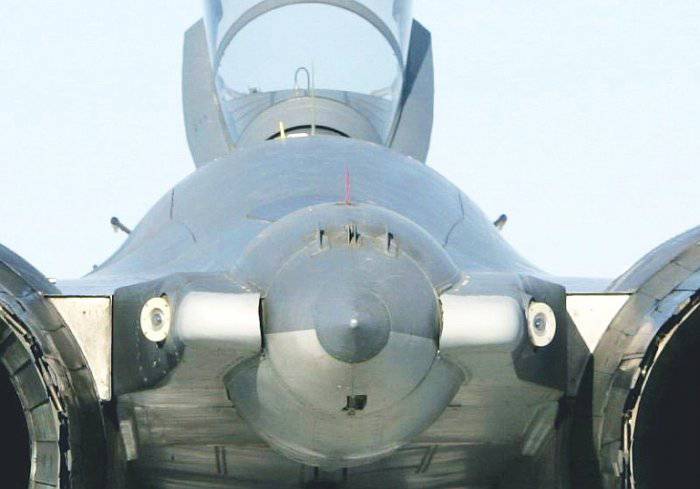China continues to copy Russian military equipment
A decade ago, military-technical cooperation between Russia and China was the core part of the profits from all Russian arms and military equipment exports; to date, none of the existing supplies can boast this volume. At the same time, as a result of this partnership, China has made a technological leap over the past 20 years, comparable only to progress in the 50's. At the end of the 80-s, the Chinese army was equipped with either direct copies of the Soviet special technologies developed in the 40-50-s, or equipment and weapons made on the basis of the Soviet systems with minor changes. At the same time, the Chinese continued to comprehend and copy Soviet military production and later, after the actual breakdown of relations between the two states by the beginning of the 60-s. Necessary examples of modern equipment and weapons they received in a roundabout way, through third world countries, purchasing weapons from Moscow.
The PRC in the process of military-technical cooperation with Russia, as well as forty years ago, was extremely pragmatic: providing key industries with modern special technologies due to deliveries from Russia, copying examples of equipment, systems and devices for the purpose of their mass production in China, becoming their own military school design through close cooperation with Russian educational and research institutions of the required profile.
This logic is traced in all the weapon contacts of China and Russia over the past 20 years. And in the actions of the Russian side of a systematic approach in cooperation is not visible. He certainly was present in the 50-ies, when, transferring to Beijing absolutely modern equipment, the USSR established the limited access of its ally to fundamentally new technologies. These restrictions, together with its internal upheavals of the 1960s, were the main reason for the sharp slowdown in the development of the military industry in China after the cessation of Soviet aid. Now, in a few decades, China is actively making up for lost time.
A particularly difficult situation in China has developed in aviation industry. In the early 90s, the air forces of the People's Liberation Army of China were armed mainly with equipment of the 1st and 2nd generation. These were fighters that appeared in the Chinese Air Force under the J-1 brands, as well as J-6, analogues of the Soviet Mig-17 and Mig-19. They formed the basis of the Chinese front-line aviation, and the serial production of the J-6 in China was interrupted only in the early 1980s, more than 20 years later than in the USSR. At that time, J-7 aircraft remained in production for the PLA Air Force - a copy of the Mig-21. They were also exported. To date, the best Chinese fighter - the J-8 - is an exact copy of the Mig-21 design solution. In addition to the fact that the Chinese air forces were equipped with obsolete equipment, they actually did not have the skill of combat use both at the strategic and tactical levels, and they also experienced difficulties due to the extremely disgusting training of personnel, poor infrastructure, and poor quality of control. Neither in the Korean War nor in the hostilities in the confrontation with Vietnam in 1979 did the Air Force take an active part.
In solving this problem, China plans to rely on two main programs. The first was the purchase in Russia of a heavy Su-27 fighter with the further establishment of its licensed production. 2 is in the production of J-10 light fighters based on the Israeli Lavi acquired at the end of the 80s. This task, however, also could not be solved by China without outside help.
Before 1995, China bought two batches of Su-27 from Russia. For the period from 1992 to 1996, the 36 single-seater Su-27SK and 12 dual Su-27КБК were received from Russia. At the end of 1996, an agreement was signed on the creation in China of licensed production of Su-27, including the production of 200 combat aircraft at the plant in Shenyang. In the Chinese Air Force, this aircraft received the designation J-11. The development of licensed production by Chinese designers and the illegal copying of other similar aircraft allowed China to make a breakthrough in the field of aircraft manufacturing by the end of the first decade of the twenty-first century — the launch of mass production of J-11 without the use of Russian equipment.
However, by the 2 of 90, the main Su-27, prepared primarily for air supremacy, are completely unhappy with the Chinese Air Force, given that they needed a multi-purpose aircraft to fight as targets in the air and on earth. In August, the 1999 of the year was followed by the completion of the contract for the supply of 40 Su-30MKK, which, unlike the Su-27SK, could use the latest air-to-air missiles, as well as fire from various types of air-to-surface weapons. Another contract for the supply of 43 such machines was signed in 2001 year. Today, the Su-30 form the basis of the combat power of the PLA Air Force.
In parallel with deliveries from Russia Su-30 and production J-11, China continued to develop its personal promising machines, of which three are the average J-10 fighter based on Israeli Lavi, lightweight FC-1, created on the basis of the MiG-21 technology platform, and for the longest time remaining secret, the fifth-generation fighter J-20. According to the statement of the Chinese designers, the J-20 created by them is unique and has no analogues in the world. But, despite this statement, you can be sure that the main base is copied, but it is not yet known from which aircraft and which country.
By copying foreign technology, China was able, in the end, to create its own world-class military industrial complex, as well as independent design schools. It is practically impossible to stop the growth rate of the military-technical and scientific potential of the PRC, which means that world states should take this into account and use it in their own interests. For the most part this applies to Russia, which, despite its enormous military-technical potential, has something to learn from its Far Eastern neighbors.



Information